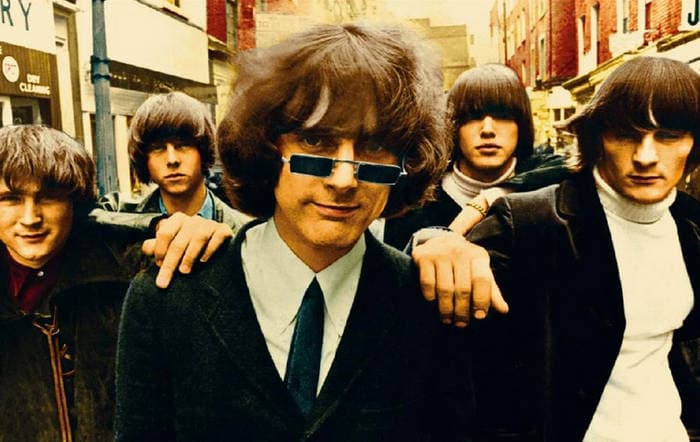
The Byrds’ “Mr. Tambourine Man”: A Timeless Folk-Rock Anthem of Hope and Wanderlust
In the mid-1960s, a new sound emerged from the burgeoning folk and rock scenes, blending poetic lyrics with electric instrumentation. Few bands exemplified this fusion as brilliantly as The Byrds, and their debut single, “Mr. Tambourine Man,” became a defining anthem of the era, a timeless classic that continues to resonate with listeners today.
Released in 1965, “Mr. Tambourine Man” wasn’t just a hit; it was a cultural phenomenon. It topped the charts, introducing the world to the distinctive sound of folk-rock and solidifying The Byrds’ place in music history. The song’s appeal lies in its combination of Bob Dylan’s evocative lyrics, Roger McGuinn’s jangly 12-string guitar, and the band’s harmonious vocals, creating an atmosphere of both dreamy introspection and infectious energy.
“Mr. Tambourine Man” is a song about seeking inspiration, about the search for guidance and transcendence. Dylan’s lyrics, rich in imagery and metaphor, paint a picture of a wanderer seeking solace and direction from the mysterious “Mr. Tambourine Man.” The song captures the spirit of the times, the yearning for something more, the desire to break free from the constraints of everyday life. It speaks to the universal human experience of searching for meaning and connection.
The lyrics are not just poetic; they’re also deeply personal. They invite listeners to interpret the “Mr. Tambourine Man” figure in their own way, whether as a literal musician, a spiritual guide, or a metaphor for inner inspiration. Lines like “Hey, Mr. Tambourine Man, play a song for me / I’m not sleepy and there is no place I’m going to” express the narrator’s longing for guidance and the open-ended nature of their journey.
Musically, “Mr. Tambourine Man” is a masterpiece of folk-rock. McGuinn’s 12-string guitar, a signature element of The Byrds’ sound, creates a shimmering, ethereal backdrop for the lyrics. The song’s tempo is upbeat and infectious, yet there’s also a sense of underlying melancholy, reflecting the bittersweet nature of the search for meaning. The harmonies, reminiscent of both folk and British Invasion bands, add another layer of richness to the song’s sonic tapestry.
The impact of “Mr. Tambourine Man” extends far beyond its chart success. It helped popularize folk-rock, paving the way for countless other artists to explore the fusion of folk and electric music. It also introduced Bob Dylan’s songwriting to a wider audience, solidifying his reputation as a poet and a visionary.
The song’s enduring appeal lies in its timeless themes of hope, wanderlust, and the search for connection. It speaks to the universal desire for something more, the yearning for inspiration, and the belief that there is something greater out there. For listeners who appreciate poetic lyrics, memorable melodies, and the power of music to transport us to another place, “Mr. Tambourine Man” is a must-hear.
In conclusion, The Byrds’ “Mr. Tambourine Man” is a timeless classic that captures the spirit of the 1960s and continues to resonate with listeners today. It’s a song about searching, about hoping, and about the enduring power of music to inspire and uplift us. “Mr. Tambourine Man” is a true gem of folk-rock, a testament to the power of blending poetry and music to create something truly magical.